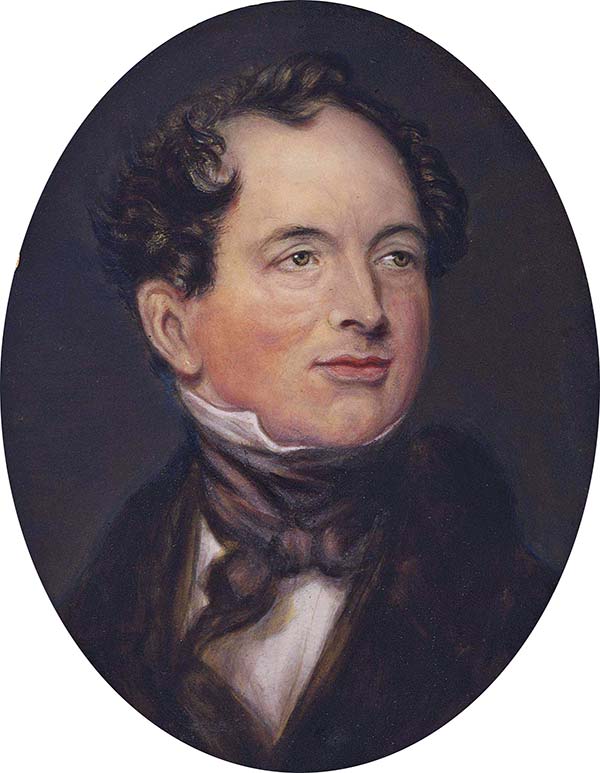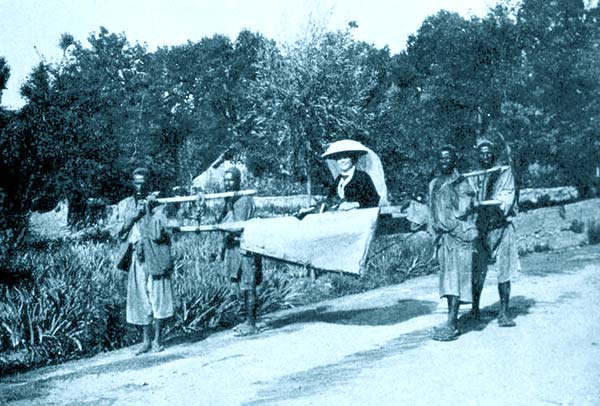British poet’s 1817 narrative made Cashmere instantly famous in the West but nobody knew the man had fallen in love with the Vale without visiting it. On his 164th death anniversary, Mir Liyaqat offers an idea of the poet and his historic creation
 Thomas Moore (May 28, 1779– February 25, 1852) the son of a shoemaker achieved such literary stardom in the eighteenth century that he is often referred to as the national bard of Ireland. This Dublin born, talented Irish was not just a poet but a famous satirist, composer and a great musician. His magnum opus work 130-poem Irish Melodies (1807-34) grabbed him 500 pounds annually after its publication for more than 25 years. His oriental romance; Lalla Rookh earned him a record-breaking stipend of 3,000 pounds at a time when the literary stalwarts like Byron and Shelley were dominating the literary landscape.
Thomas Moore (May 28, 1779– February 25, 1852) the son of a shoemaker achieved such literary stardom in the eighteenth century that he is often referred to as the national bard of Ireland. This Dublin born, talented Irish was not just a poet but a famous satirist, composer and a great musician. His magnum opus work 130-poem Irish Melodies (1807-34) grabbed him 500 pounds annually after its publication for more than 25 years. His oriental romance; Lalla Rookh earned him a record-breaking stipend of 3,000 pounds at a time when the literary stalwarts like Byron and Shelley were dominating the literary landscape.
In his later life, the poet became physically crippled, disabling him from writing and singing.
Lalla Rookh: An Oriental Romance (1817) is Moore’s acclaimed narrative that became immensely popular in the west. The main protagonist of the romance is Lalla Rookh (tulip cheeked), the princess and the daughter of Emperor Aurungzeb.
During Aurungzeb era, Abdullah, King of Bukhara, gave up his throne in favour of his son, who was that time on a holy pilgrimage to Mecca. His cavalcade was passing into India through the fascinating valley of Kashmir and rested for a short time at Delhi. He was given full protocol by the king Aurungzeb and received royal hospitality, care and afterwards, was escorted up to the Surat, where he embarked for Arabia.
During his temporary stay at Delhi, marriage was agreed upon between the Prince, his son, and the youngest daughter of the Emperor, Lalla Rookh. It was intended that the marriage ceremony should be celebrated in Kashmir Mughal gardens; where the young King and the beautiful princess will meet face to face for the first time. Engaged to the young king, Lalla Rookh undertakes a journey to meet him but falls in love with Feramorz, a Kashmiri poet who was one of the attendants.
Moore’s Lalla Rookh consist four added tales sung by a Kashmiri poet: ‘The Veiled Prophet of Khorassan’ ‘Paradise and the Peri’, ‘The Fire-Worshippers’, and ‘The Light of the Harem’. It is pertinent to note that the romance was written in the backdrop of the American Revolution, French Revolution and the mass resistance of Irish people against the British rule.
Who has not heard of the Vale of Cashmere,
With its roses the brightest that earth ever gave,
Its temples, and grottos, and fountains as clear
As the love-lighted eyes that hang over their wave?
The Princess never had such an experience to see any poet directly performing as she used to see from behind the screens of gauze in her father’s hall. As the poet continued with his tales of love and tragedy, she felt interested as well as inclined towards the narrator. He started with the story on the adventures of that Veiled Prophet of Khorassan, who, in the year of the Hegira 163, created such alarm throughout the Eastern Empire earning him praise from the Princess. But the Lalla Rookh became gloomy after she heard the sad love story of Zelica of Azim. She now thinks only about the misery of these two young lovers in the journey. Her gaiety was gone, and she looked pensively even upon Fazaldeen. She felt some sort of uneasy and restlessness imagining that Azim must have been just such a youth as Feramoraz is, and was worthy to enjoy all the blessings of life.
Neither the serene atmosphere of the valley of Kashmir nor the splendour of the minarets, those high and romantic snow-peaked mountains, nor the fair city on the Lake, where the houses roofed with flowers could steal her heart for a minute from those sad thoughts which but darkened and grew bitter after every passing day.
The Lalla Rookh is a classical romance embedded with intrigues and mystery; it’s considered to be the first imaginary travelogue upon which most of the western travellers conditioned their narrative on Kashmir. Historically if we delve deep in the tales we see that Thomas Moore was actually in search of an Ireland in the distant Orient territory. It’s because of the Irish political and cultural contexts that his literary work received a lot of closer critical attention from the English and Irish critics.
“I suspect you have written a devilish fine composition, and I rejoice in it from my heart,” Moore’s famous contemporary poet and friend Lord Byron wrote to him. More recently, another modern oriental critic Nigel Leask writes that I find links between Romantic Orientalism and political struggles for national independence; like the eminent connection between Lalla Rookh and Shelley’s Address to the Irish People (1812) and The Revolt of Islam (1818). Despite all criticism and praise, Moore’s Lalla Rookh was immensely successful and since its first edition, it has reached its twentieth edition.
The narrator in all the four imaginative tales is Feramorz: a young Kashmiri poet employed to accompany and entertain the Mughal princess Lalla Rookh on her journey from Delhi to Kashmir. All the tales are high melodrama and become increasingly interesting as the emissary Fazaldeen, one of Lalla Rookh’s entourage on the journey, assumes the role of ill-tempered critic of Feramorz’s tales. The tales of Feramorz’s were so emotive and breathless that at the end of the journey the princess falls in love with him. The poet turns out to be the king of Bukhara with whom she was engaged.
Here Moore draws an analogy between the Kashmiri and the Irish poet by expressing their national tales plagued with the torment. By using the breathtaking imagery of Kashmir and the melancholic love stories, he tries to galvanize the Irish readers to use these romantic resolutions as a medium towards the Irish struggle for liberty.
Moore never visited Kashmir but his oriental romance; Lalla Rookh became the blueprint for the early European travellers visiting Kashmir. However, the rosy picture of Kashmir showcased by the Moore to the European people in his romance was often shattered by the prevailing ground realities in the valley. Before writing the Lalla Rookh, Moore took a close look at the writings of George Foster and Francois de Bernier whose travelogues are considered to be the first authoritative source on Kashmir. These travelogues successfully placed the beautiful valley of Kashmir in the deep psyche of European imagination as a spectacular distant destination in the oriental world. By mid-1850s Kashmir emerged as the destination of romance and solitude for the European travellers.

Lalla Rookh’s popularity in Europe provoked satires and parodies from the readers and cultural critics. The poems in The Veiled Prophet and The Fire-Worshippers become cross-cultural tales about the relationship between the colonized and colonizers. However, the Lalla Rookh failed to shape the Irish psyche—despite its claim to be the important work in Moore’s search for an Ireland. But the Lalla Rookh will be always seen as the significant text in the history of English literature; largely its contribution to the study of the political legacies of the French revolution and the Irish Rebellion of 1798. Many Victorian readers were driven mainly by the common urge for novelties and curiosities, which later turned to be the market for the East India Company’s exploitation.
After the tragic partition of the sub-continent, many European travellers began to challenge the manufactured myth that the valley of Kashmir is an abode of peace and the rosy picture portrayed in the Lalla Rookh and other previous volumes was all fiction. Their travelogues on Kashmir after partition became explicitly political and controversial.
Nonetheless, Moore himself recognized that his Oriental writings would not attain the lasting status that his Irish work had earned, he wrote in 1837, “I am strongly inclined to think that, in a race into future times (if any of mine could pretend to such a run), those little ponies, the Melodies, will beat the mare, Lalla Rookh hollow”.
But Moore’s search for an Ireland in the Lalla Rookh remains an unacknowledged literary piece in the galaxy of world literature. On the other hand, the Kashmir; oriental heaven in the Lalla Rookh became strategically important for the British after they landed in the sub-continent. All the post-partition English fiction on the Kashmir scribed by the European writers is all political and intriguing in nature because of the prevailing political instability in the region.
(Author is a research scholar at the University of Pune.)















